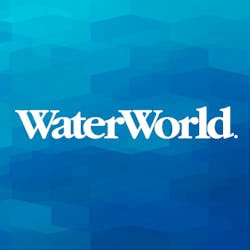As the nation’s water and wastewater treatment systems reach the end of their intended lifespan, investing in water infrastructure has taken the spotlight. Issues such as resilience, emerging contaminants and affordability all point to a need for strong investment in the water sector, but there is still a funding gap between what we need to spend and what utilities can afford to pay for necessary repairs. For our lead feature this month, I spoke with two water advocacy groups, WEF and NACWA, to understand how they are ensuring this vital resource is protected — and funded — across the nation. Read about their important work on page 8.
On page 12, the Water Research Foundation’s (WRF) Kelsey Beveridge and Ashwin Dhanasekar tackle the topic of utilities’ energy use, which often accounts for 30 percent or more of total costs at water or wastewater treatment plants. To account for this, some utilities are moving toward generating energy on-site and participating in programs to offset electrical grid usage. They describe distributed energy resources (DER) as an exciting opportunity for drinking water and wastewater utilities and discuss a WRF project intended to provide guidance to utilities planning or implementing renewables or DER in their operations.
With water industry retirements expected to leave up to 3 million jobs to fill, supporting the future of the water workforce and encouraging new applicants to consider the industry is a major effort. The Water Agency Leaders Alliance (WALA) is working to meet utility workforce needs through a national workforce development grant program, encouraging younger, female, and minority applicants to apply for water sector jobs. As the author writes, “It is imperative that we increase awareness about these fulfilling careers and provide the training, support and resources necessary to ensure we have an engaged workforce reflective of the communities where we operate. What better way to serve our customers, than to employ residents who live in our neighborhoods?” Read all about it on page 15.
Digital technologies have transformed the water sector in recent years and are continuing to shape innovation in water supply, leak detection, monitoring and more. On page 18, read about the factors currently driving digital transformation in the water industry.
Digital mapping is helping members of the Ohio Rural Water Association (ORWA) map their utility system and assets. On page 20, learn how Esri’s ArcGIS platform supports asset management by empowering utility workers in the field with tools that strengthen distribution, maintenance and call-outs for service over time.
Next, when a German wastewater treatment plant wanted to improve efficiency, it was able to do so using a decanter centrifuge to thicken excess sludge, reducing energy consumption from 4 million kWh to 3 million kWh in the process. On page 24, read about how the process works, and lessons learned on energy management.
Finally, the computerized maintenance management system at Kentucky’s Sanitation District No. 1 helped the utility ensure compliance with environmental standards, while integrated regulation updates and streamlined reporting saved the utility time. Now, permits can be easily tracked and amended in one place, and violations are automatically updated in the system at once. Learn more about the strength of automation in this month’s case study on page 39.
There are numerous factors shaping the future of the water industry today, and I am excited that our features this month tackle this topic from several angles. We hope you enjoy this issue of WaterWorld magazine. Thanks for reading! WW
About the Author

Alanna Maya
Chief Editor
Alanna Maya is a San Diego State University graduate with more than 15 years of experience writing and editing for national publications. She was Chief Editor for WaterWorld magazine, overseeing editorial, web and video content for the flagship publication of Endeavor's Water Group. In addition, she was responsible for Stormwater magazine and the StormCon conference.
